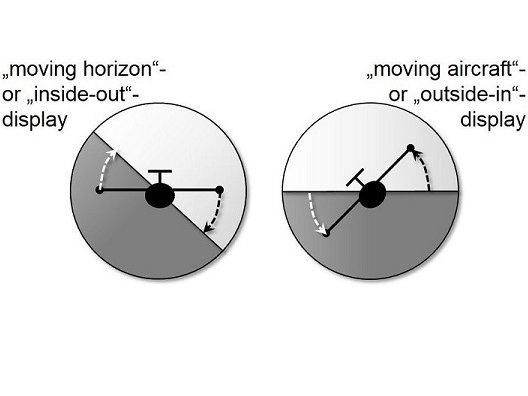Applied Cognitive Psychology (Janczyk)
In addition to the fundamentally science-oriented research areas, we also transfer the worked out theories and concepts to applied questions, in particular the field of human factors.

One example concerns the efficiency (and possibly also associated problems) of different formats of the artificial horizon in aviation. Here, the same information (the horizontal position of an aircraft) can be displayed in two ways: with an inside-out display or an outside-in display. Against the backdrop of the ideomotor principle, the inside-out display can be described as a "reaction effect incompatible" - however, it is the variant that is used in many aircraft. Our work shows that at least for non-experts / non-pilots this actually comes to problems compared to the outside-in display.

Another example is non-contact gestures, e.g. to interact with infotainment system and computers. Here principles could also play a role, which are established in basic research on action selection. We have therefore begun to investigate various compatibility phenomena in the case of gestures and have encountered similarities as well as differences from laboratory-typical reactions.
Representative publications:
Janczyk, M. (accepted/in press). Compatibility effects with touchless gestures. Experimental Brain Research.
Janczyk, M., Xiong, A., & Proctor, R.W. (2019). Stimulus-response and response-effect compatibility with touchless gestures and moving action effects. Human Factors, 61, 1297-1314.
Janczyk, M., Yamaguchi, M., Proctor, R.W., Pfister, R. (2015). Response-effect compatibility with complex actions: The case of wheel rotations. Attention, Perception, & Psychophysics, 77, 930-940.
Kunde, W., Pfister, R. & Janczyk, M. (2012). The locus of tool-transformation costs. Journal of Experimental Psychology: Human Perception and Performance, 38, 703-714.
